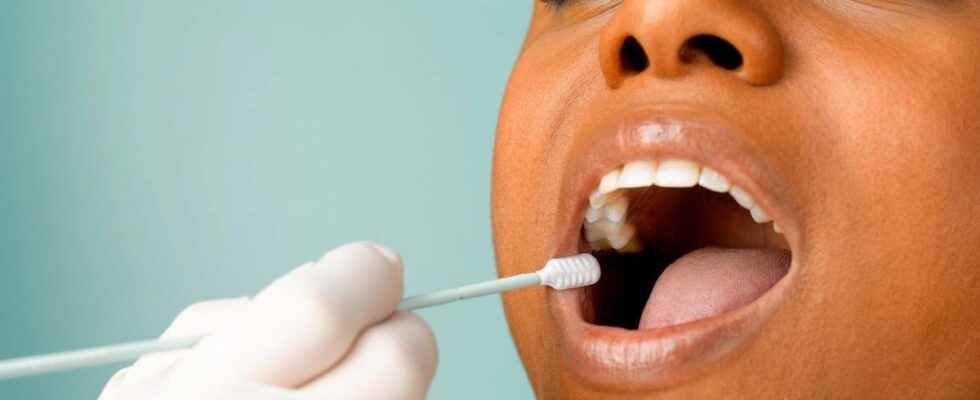Published 18m ago,
Reading 2 mins.
Researchers at the University of Manchester in England have developed a saliva test to assess the genetic risk of breast cancer in women under 50. A breakthrough that could save thousands of lives. Update on this discovery with Dr Ivan Pourmir, medical oncologist at the George-Pompidou European Hospital in Paris.
Each year in France, breast cancer concerns 54,000 new cases in France and as many in the United Kingdom. “Breast cancer accounts for approximately 1/3 of cancers diagnosed annually in women and is the leading cause of cancer death. Fortunately it can be cured when detected at a fairly early stage, which is why screening programs are in place, but they are not perfect”says first of all Dr. Pourmir, medical oncologist.
Search for DNA variations
Faced with this observation, English researchers have developed a saliva test that would identify half of the women who will have breast cancer in the next decade. “The aim is to search in parallel for 143 variations present in the DNA, called polymorphisms, which have been correlated with the risk of occurrence of breast cancer thanks to the analysis of data acquired during the “PROCAS” study carried out in the Manchester area” explains Dr. Pourmir.
An easy-to-perform saliva test
The test takes place as follows: the DNA of the women concerned is collected through a saliva sample when they come for a mammogram.
Then “based on the variations found, a score evaluating the risk of occurrence of breast cancer is calculated. This makes it possible to identify different categories ranging from 1/4 of the average risk to a risk 4 times higher than the average according to Professor Evans” details medical oncologist.
Encouraging results
The study involved 2,500 women. Among them, 644 reported breast cancer. Using saliva testing, medical history information and breast density measurements, disease risk was predicted in just under 50% of cases.
There are therefore still improvements to be made, but this test could be generalized for young women, aged under 50, in the future. For Professor Gareth Evans, lead author of this study, “this is particularly important for women under 50, who account for one in five cases of breast cancer“.
But the Professor is even more ambitious: “Ultimately, the goal is that when a woman is around 40, we can do a full risk assessment for all female cancers, not just one, and then develop a screening program. Currently the most expensive part is the genetic test at around £80 per test but it’s not that expensive when you consider that if used accurately you save £80 for every mammogram you don’t have no need to do. Finally, you will save money thanks to better targeting“.
Consult an oncologist online
Beware of over-screening
If this test gives hope, we should not fall into the excess of screening, as Dr. Pourmir reminds us. Because sometimes, thorough investigations put the finger on “non-cancerous tumors for which investigations are carried out, while they are not devoid of negative effects”.
According to him, “some tumors, although considered malignant when analyzed in the laboratory, will not lead to a disease that significantly impacts an individual’s life expectancy and quality of life. Thus the diagnosis and treatment of such tumors can sometimes have negative repercussions without real benefit. concludes the specialist.
